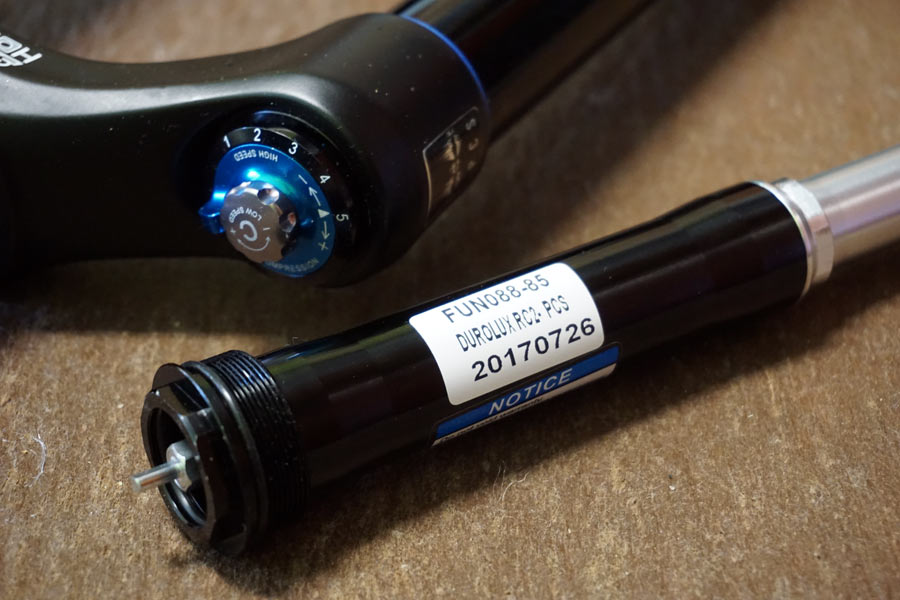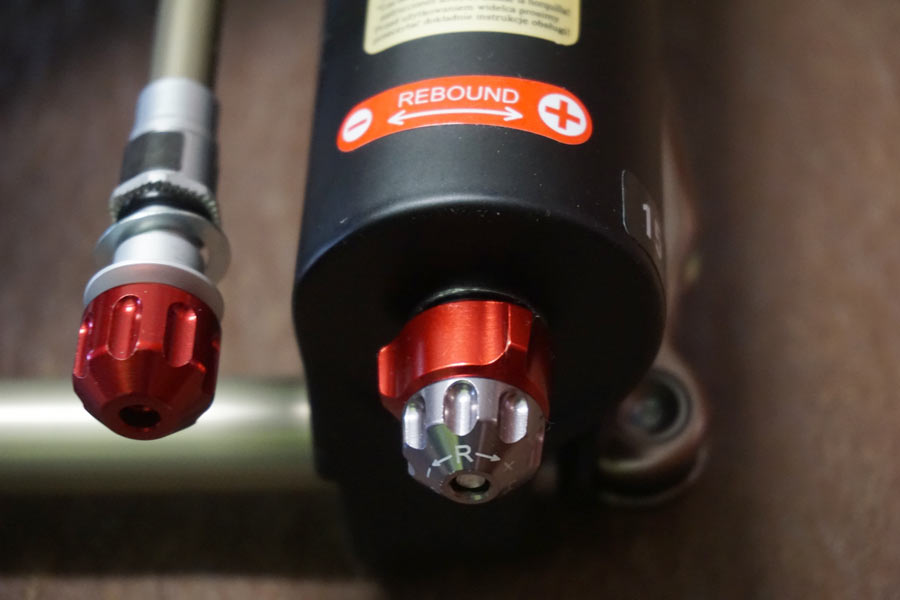When it first launched, the SR Suntour Durolux mountain bike suspension fork was designed to do one thing: Win enduro races. Originally only for 27.5″ wheels with 20mm thru axles, they’ve since introduced 29er versions and adjusting to fit the more common 15mm thru axle standard. Now, they’re adjusting again…by reducing the adjustments.

The Durolux R2C2 was the top of the line, and will likely continue to be used by their sponsored pros, offering external controls for both high and low speed compression and rebound. Internally, that meant two separately adjustable circuits for each. On the compression end, things stay the same and they’re keeping their PCS (Piston Compensator System) and dual external adjustments.
The rebound end is where things are changed. Now called RC2, they’ve removed the high speed rebound adjustment dial, instead relying on a pre-set factory tuned shim stack. This replaces the rotatable shim that covers the R2C2’s high speed shim stack, simplifying the system. Their rep told us that, in extreme circumstances, the R2C2 system’s rebound shims could bend permanently and possibly even break a shim, introducing loose metal into the system and causing total failure erratic rebound performance. It’s rare, but this new design fixes that, too.
The low speed rebound, which affects rebound speed on the top 1/2 to 2/3 of return travel and has a more noticeable effect for most riders, keeps its external, user-adjustable knob. (Want to learn more? Read our Suspension Tech article on rebound damping.)
In addition to the new circuit, they reduced the damping piston’s shaft diameter from 10mm down to 8mm. The total oil volume remains the same, so theoretically, this means less oil volume flowing through the circuit at any given moment. More importantly, they reworked the port shaping and flow path, eliminating some of the restrictions to create a more plush fork. Keep in mind, this fork is still winning EWS and World Cup races, so it wasn’t bad, they just thought they could do better. And for non-EWS winning pros, they thought a softer, more plush fork would be a step in the right direction.
The new Durolux RC2 cartridge is easily installed and available as a free replacement for anyone that owns the R2C2 cartridge. If you want. All new forks will come with the RC2 cartridge as the top-level offering for now while they take the R2C2 back to the lab. Oh yes, it shall return, but for now this means a $100 price drop. The 2018 Durolux RC2 forks will retail for $700 and are shipping now. (Note: You might still see the R2C2 on their website, but European and North American distributors aren’t selling it until the new version comes out.)

